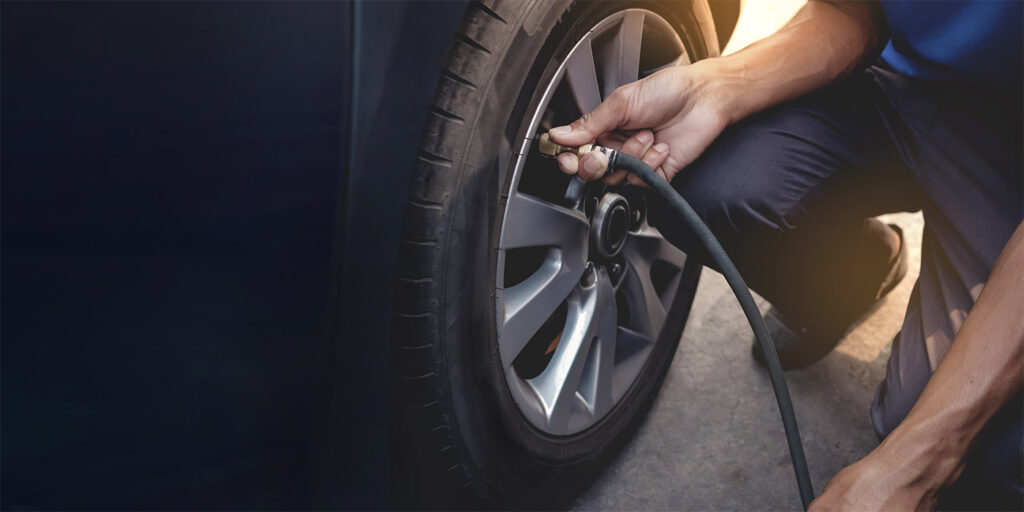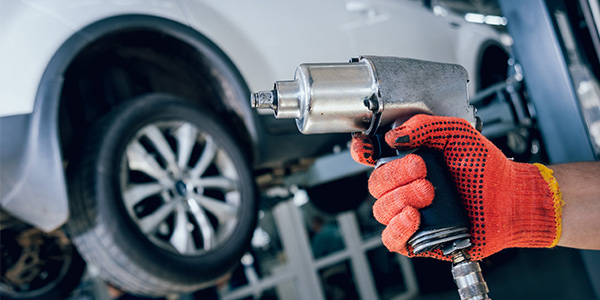The decade of the 1970s, was, among other things, a decade enthralled with mystery. The public clamored for subjects like Bigfoot, Area 51, UFOs and King Tut, just to name a few. TV and movies played into the demand with movies like Close Encounters of the Third Kind, creatively bringing the alien allure to a real life that we all could associate with.
Of course, there were alien movies before and there have been alien movies since, but there’s one thing they have in common: spaceships don’t have tires. So, they obviously don’t need to stop and air up on Venus along the way. And have you noticed every time a spaceship crashes and the alien goes on a quest to fix it, all of the components are easily replaced by pulling some type of lever and sliding the part out? Occasionally you do catch them welding, but never using air tools – or any other tool for that matter.
Perhaps their electronics are so advanced that they don’t utilize compressed air in their worlds, except for all the doors in their spaceships that emit that telltale hiss when they open or close. But, back on Earth, we love compressed air, and especially in the automotive industry.
There’s been many an opinion over the last few years about whether battery-powered tools will replace the air tool. I love my cordless electric tools and use them almost daily, but my home auto shop is all about air, and I don’t think I’ll find too many who disagree.
First of all, cars have tires, and there’s only one thing that keeps them round. (Yes, nitrogen…I know). And setting aside all the air tools and equipment we use on a regular basis such as impacts, ratchets, die grinders, tire machines and lifts, compressed air is the key to many of our special tools.
Cylinder leak-down testers, fluid evacuation tools, brake bleeders, smoke machines, cooling system fillers and sand blasters; these are all tools that rely on air, and we rely on these tools. Compressed air is the single biggest resource we depend on in an auto repair shop, even though it’s easy to take for granted and overlook all the end uses we have for it.
One of the more recent prevailing topics is loss in your compressed air system due to leakage. It’s really an important factor that ultimately breaks down to energy use, equipment maintenance and noise pollution. Reducing air loss from leaks has an immediate effect on all of these variables, and studies have shown that it could save upwards of $1,000 in electrical costs over the course of just one year.
The most common leaks are in the air hoses themselves, especially when an end has been replaced, as well as leaking air tool fittings. Aging piping systems can also start to leak, primarily at fitting connections. Air tool fittings that are installed without the use of Teflon sealing tape, ones that are simply worn out or substandard quality fittings are all culprits to cause leaks.
I always encourage keeping new fittings on hand, and not to skimp on replacement. If there’s even a slight leak, it’s time to replace the fitting. I know this is easier said than done due to the extra expense, but the savings will more than offset the cost, and in the interest of noise pollution, it’s a much nicer work atmosphere.
Next in line of popular topics is compressed air piping systems. For years, the common piping was black pipe or copper. And you know what, most of it is still in service. It’s all dependable, solid stuff. But over time it can corrode, start to leak and allow contaminants to be picked up in the air. We often don’t notice any immediate affects in a repair shop, but body shops are becoming increasingly focused on their piping systems. Paint technology and the associated costs have made compressed air and piping systems that provide clean, dry air a priority for these shops.
When it comes time to replace the piping in your shop, it might be a matter of using the same type as what you already have. Some of it is simply tried-and-true. But some of it is tried and no-so-true. Here’s the most common piping options that come into consideration.
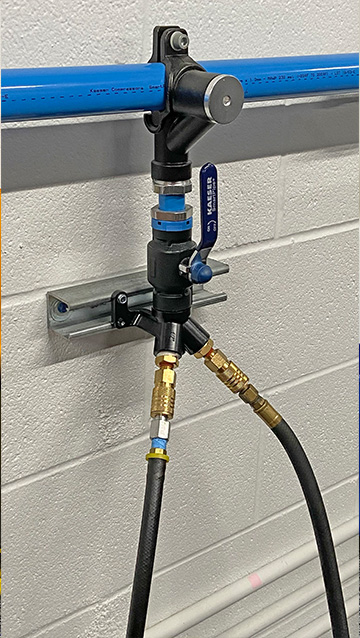
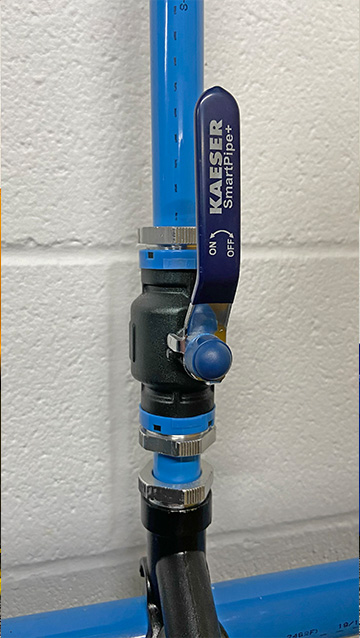

Black Pipe: You could consider this one of the most common types of piping over the years. It’s reasonable from a cost standpoint and available in multiple different lengths. Installation is comparatively time consuming, and it has a greater possibility of rust and corrosion, partly due to the fact that the inside is rough, creating opportunity for contaminant buildup.
Galvanized Pipe: This piping has also been used frequently and is similar to black steel pipe but has a greater resistance to corrosion. It is, however, more susceptible to experience flaking of the coating on the inside, which can cause blockages and possible damage to air tools.
Copper: Another very common option over the years, but a more expensive material, copper won’t rust and has a smooth interior but requires soldering for installation.
PVC piping is not recommended. While inexpensive and lightweight, it’s more susceptible to breaking or bursting and is not always compliant with building codes. Some of the required adhesives are not compatible with compressor oils, and it can also carry a static charge. It has been used but should be crossed off any list due to its drawbacks.
Aluminum is lightweight, corrosion resistant and easy to install because it can be connected using compression fittings, so no soldering is required. It may be more expensive than others, but it is also not susceptible to gas diffusion, which is the ability of a material to lose air through its walls.
This is becoming a more common choice for modern piping systems.
There are additional types of piping such as stainless steel and high-density polyethylene (HDPE), but due to cost, they are often reserved for industrial applications where the benefits align with the requirements of the application. The bottom line is there are pros and cons to each different material and determining what you need comes down to research and a comprehensive look at what your shop needs now and what it may need in the future.
System Layout
There’s more than meets the eye here, and it’s a trend that’s been getting a little more engineering attention. The most common layout for a new setup is done in a closed loop. Traditionally, the air line runs from the compressor, across the shop and has a tee installed everywhere an air outlet is required. Then it terminates at the furthest point from the compressor. This gets the job done, but if there’s a lot of air being used, the end of the line gets the least pressure.
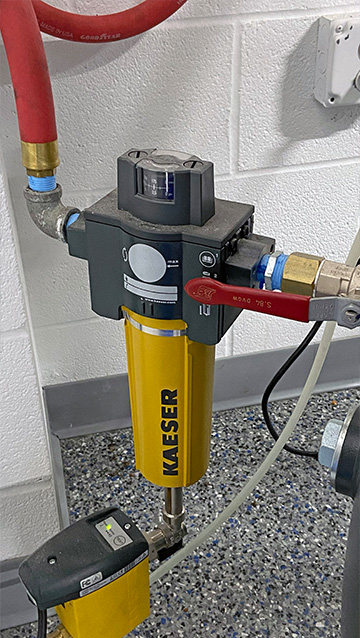
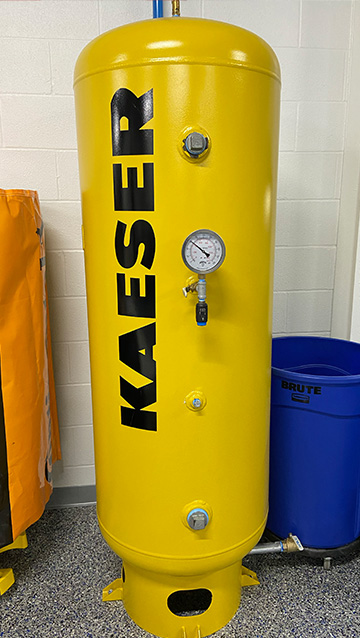
A closed loop layout tees off as two lines at the compressor, then runs across the shop and connects at the end. This equalizes the pressure across all outlets in the system – a nice feature.
Back to the opinions, what type of compressor do you prefer? The battle rages on between reciprocating and rotary screw. It’s a tough call. The rotary screw compressor we have here in the Babcox Media garage is a work of art. I wasn’t familiar with them at all but this one grows on me every day. On the other hand, I have a reciprocating compressor at home, and it works great. It’s all I need.
Compressors too have so many variables that it comes down to each and every shop. What’s right for one is wrong for the other. As long as we have compressed air and we have a way to get it to our equipment, we’re in business.
So that’s what we humans do here on earth. We use compressed air. I’m still not sure about the aliens. Maybe if The Greatest American Hero hadn’t lost the instruction manual for the red suit, his flying saucer friends would have given him more insight on their technology. But until then, this is the best I can give you.

